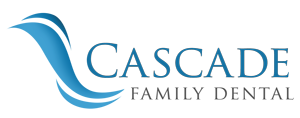10 Essential Tips for Maintaining Clean Teeth Between Dental Cleanings
Introduction:
Taking care of your teeth is not just about having a beautiful smile; it’s also crucial for the overall health of your mouth. While regular dental cleanings are important, what you do in between appointments is equally significant in preventing issues such as plaque buildup, cavities, and gum disease. In this blog post, we will discuss eight practical tips that you can follow to keep your teeth clean and healthy until your next dental visit.
- Brush Twice Daily: Brushing your teeth twice a day is the cornerstone of good oral hygiene. It’s important to use fluoride toothpaste and a soft-bristled toothbrush to clean all surfaces of your teeth gently. This includes the front, back, and chewing surfaces. Brushing helps remove plaque, bacteria, and food particles that can lead to decay and gum disease.
- Floss Daily: Flossing is an essential step in removing plaque and debris from between your teeth and along the gumline. It helps prevent cavities and gum disease by reaching areas that your toothbrush can’t. Make sure to floss gently to avoid damaging your gums and to use a clean section of floss for each tooth.
- Use Mouthwash: Mouthwash can help kill bacteria, freshen your breath, and reduce plaque buildup. For complete oral hygiene, use fluoride mouthwash after brushing and flossing to protect against cavities.
- Drink Water: Water is crucial for maintaining good health, which includes oral health. Drinking water helps rinse away food particles and bacteria, preventing them from lingering in your mouth and causing plaque buildup. Additionally, water helps stimulate saliva production, which is your mouth’s natural defense against cavities and gum disease.
- Limit Sugary and Acidic Foods: Foods high in sugar and acid can erode tooth enamel and promote the growth of harmful bacteria. Limit your consumption of sugary snacks, sodas, and acidic foods like citrus fruits. If you do indulge, make sure to brush your teeth afterward or rinse your mouth with water to minimize the effects on your teeth.
- Eat a Balanced Diet: Eating a balanced diet rich in fruits, vegetables, lean proteins, and whole grains provides essential nutrients for healthy teeth and gums. Foods high in calcium, such as dairy products and leafy greens, help strengthen tooth enamel, while crunchy fruits and vegetables can help clean teeth naturally.
- Avoid Smoking and Tobacco Products: Smoking and using tobacco products not only stains your teeth and causes bad breath but also increases your risk of gum disease, tooth loss, and oral cancer. Quitting smoking is one of the best things you can do for your oral health and overall well-being.
- Chew Sugar-Free Gum: Chewing sugar-free gum can help stimulate saliva production, which helps rinse away food particles and neutralize acids in the mouth. Look for gum containing xylitol, a natural sugar substitute that has been shown to reduce the risk of cavities.
- Replace Your Toothbrush Regularly: It is recommended to replace your toothbrush or toothbrush head every three to four months. If the bristles become frayed, replace them sooner. A worn-out toothbrush is less effective at removing plaque and bacteria, so it’s important to replace it regularly to maintain clean teeth.
- Visit Your Dentist Regularly: Despite your best efforts at home, professional dental cleanings are still necessary to remove stubborn plaque and tartar buildup. Schedule regular dental check-ups and cleanings every six months, or as recommended by your dentist, to keep your teeth and gums healthy.
Conclusion:
Maintaining clean teeth between dental cleanings requires consistent effort and good oral hygiene practices. By following these ten essential tips, you can keep your teeth clean, healthy, and free from common dental problems. Remember, a healthy smile starts with good oral hygiene habits that you practice every day.



